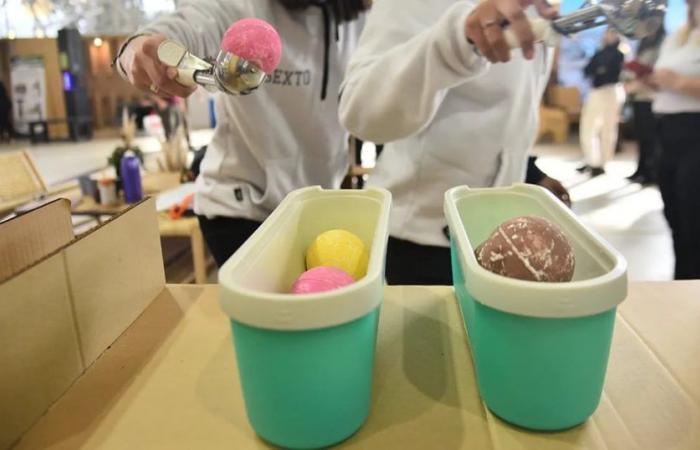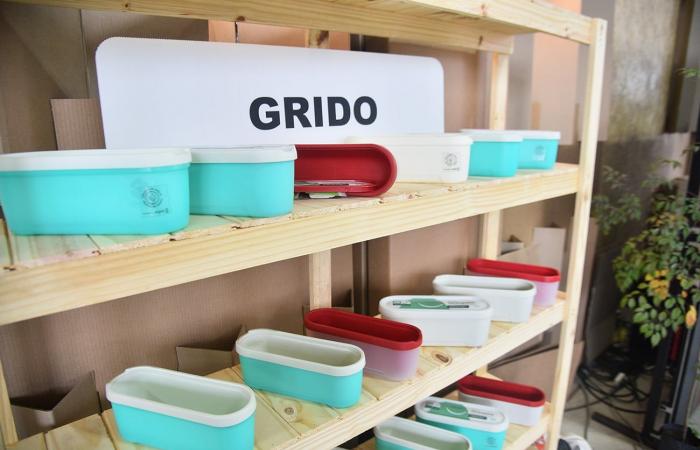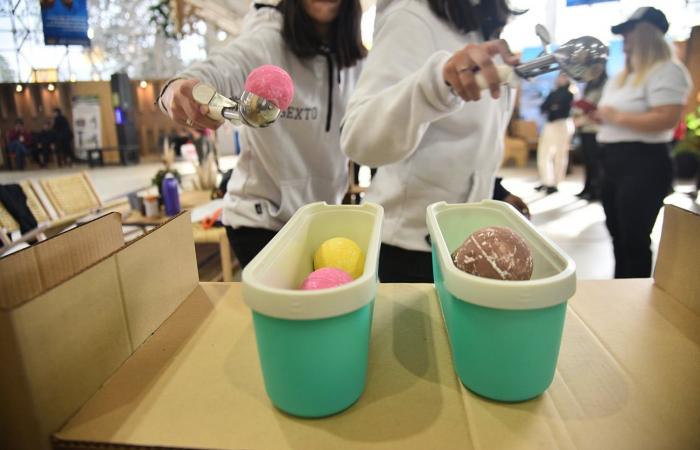Grido will be the first ice cream parlor in the world that will test selling its products with returnable packaging. The pilot test will be carried out before the end of the year in a limited number of franchises in the city of Córdoba and will be restricted to sales in stores, not with delivery.
The returnable packaging was designed and developed by Xipa, a B company, which offers solutions with plastic products to other companies. “We studied this proposal for two years and we have achieved an eco-design that improves the functional use of the container with better thermal performance,” explained Alejandro Romano Rusiñol, the director of Xipa, an expert in the world of plastics with more than 35 years in the field. sector.
One of the striking features of the design is that it is elongated in shape. This has an explanation: “We did it this way because that’s how it fits into the lid of the freezer, which is where it stays cold, but does not freeze, preserving the ice cream’s best properties and always being ready to be consumed as at the moment. where you buy it,” he explained.
The plastic used is virgin, because the Argentine Food Code requires it. But here the environmental gain is the amount of single-use packaging, plastic or Styrofoam, that is avoided.
“It is also dishwasher-safe and stackable, which makes transportation logistics much simpler, taking up much less space in the franchise locations,” Romano noted.
Javier Díaz Caballero, in charge of institutional communications at Grido, said that there will be a trial period, in which they will work with the franchisee and the consumer, to see the degree of acceptance of the innovation. And he framed this action in a series of sustainable initiatives of the company, such as social ice cream parlors and the different recycling strategies it promotes for its packaging. It is not yet clear if there will be a promotional price to encourage the use of returnable packaging. “It is an alternative that will be evaluated if there is some type of discount or reward in points for the refill,” they confided.
Xipa did the research, development and introduced the innovation. Grido invested more than 200 thousand dollars in the design and the first “baking” of returnable containers. “The systems are going to coexist, but the aspiration is that it will gradually replace disposable Styrofoam, which, being bulky and cheap, despite being recyclable, is not an interesting material for those who collect due to the low profit they obtain,” explained Romano Rusiñol, who is also a member of the Córdoba Circular Economy Cluster.

The designed returnable packaging has a calculated useful life of 100 uses. “As with any change, everyone has to contribute a little and change. The environmentally conscious consumer is going to adopt it, knowing that he has to take the container to the ice cream parlor. Or always carry the container in the car, for the purchase in passing, returning home,” Romano considered.
To advance in delivery, the key is to achieve alliances with companies that make transfers and that can first look for the containers and return them refilled, making two trips instead of one. It is a more complex point, on which no progress will be made for now.
“It is a proposal for a segment of consumers who can value this proposal,” considered Díaz Caballero, who highlighted the participation of the ideas accelerator Infinito, from Grido, in innovation.










